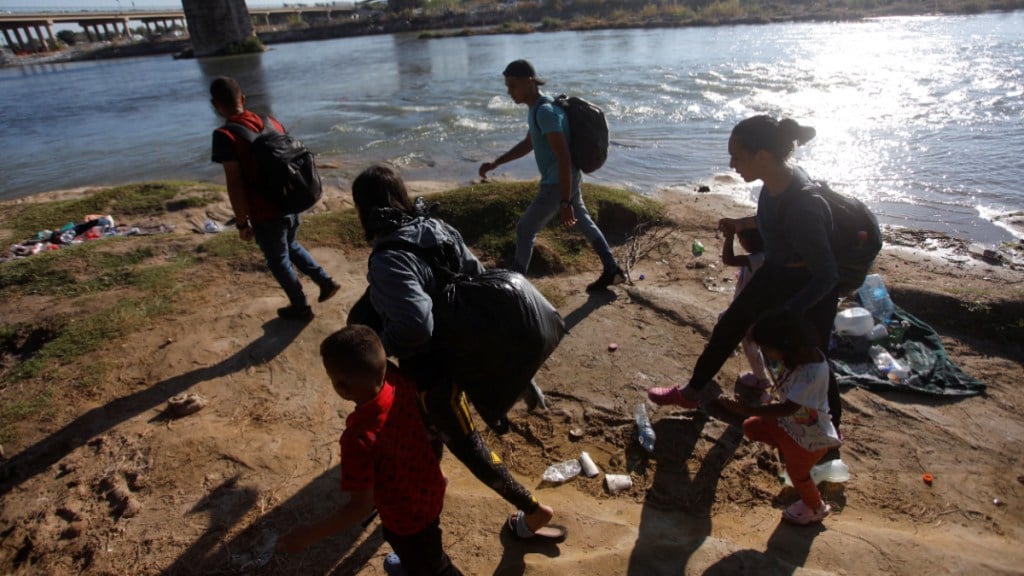The number of undocumented immigrants in the United States hit a record 14 million in 2023, which is 19% higher than the year before, according to new figures from the Pew Research Center.
The steep increase had mainly came from people who were allowed to stay in the US temporarily under the Biden administration’s policies. This includes asylum seekers and migrants released at the border by US Customs and Border Protection with instructions to appear later in immigration court.
These new estimates of 14 million undocumented immigrants is much higher than Pew’s earlier figures. If we speak in percentage, unauthorized immigrants in 2023 made up about 4.1% of the US population overall, Pew said. Most of them were people who had either crossed the border illegally or stayed in the country after their visas expired.
Pew’s report said that this group of migrants, those protected from immediate deportation, made up more than 40% of the total undocumented immigrant population in 2023.
2.6 million undocumented immigrants are asylum applicants
Out of the 6 million undocumented immigrants in the US who are protected from deportation, about 2.6 million are people applying for asylum, according to Pew Research Center. Another 1 million are migrants who were released by US border officials and told to appear in immigration court. Around 700,000 were migrants who had entered the country legally but were later paroled inside the US.
Jeffrey Passel, senior demographer at Pew Research Center told CNN that many of these people left their home countries because they faced different kinds of persecution and are now seeking asylum in the US.
Deportation protections usually do not last forever and can be changed anytime. The new Trump administration has stopped these protections for immigrants from Cuba, Haiti, Nicaragua, and Venezuela. It has also taken action against asylum seekers who were working legally in the US.
US Immigrant population drops under Trump, says research study
Donald Trump, since the time he became the US President, has pushed a tougher immigration policy, using law enforcement to carry out large-scale deportation raids. While full data is not yet out, Pew estimates that the number of undocumented immigrants in 2025 has likely gone down because of this.
Pew Research Center, which has tracked immigrant numbers since 1990, said that the latest full study was in 2023. Early findings showed the number of undocumented immigrants went up again in 2024, but the rise was slower after then US president Joe Biden put strict limits on asylum at the border in June that year. Under President Trump, the number has dropped in 2025, though it is still likely above 14 million, as stated above.
The total immigrant population in the US, including both legal and undocumented, hit a record of over 53 million in January 2025. That made up 15.8% of the country’s population, the highest ever. Since then, the number has started to fall, marking what Pew says could be the first decline since the 1960s.
Unauthorised Immigrants in the US: Statistics
Mexico: The number of unauthorised immigrants from countries other than Mexico grew from 6.4 million in 2021 to 9.7 million in 2023. By comparison, the population from Mexico rose only slightly during that time, reaching 4.3 million in 2023 (same as in 2019). The research says that in 2023, Mexicans made up 30% of all unauthorised immigrants, which was the lowest share ever recorded. Until 2016, they were the majority.
Guatemala and El Salvador: 850,000 each
Honduras: 775,000
India: 680,000
Venezuela: 650,000 (up from 55,000 in 2007 and 195,000 in 2021. This shows one of the fastest growth rates.)
Other fast-growing groups (2021–2023): Venezuela, Cuba, Colombia, Nicaragua, Ecuador, Ukraine, and Peru – All more than doubled in numbers.
Cuba: Fewer than 5,000 in 2019. The number increased to 100,000 in 2021 and again increased to 475,000 in 2023.
This rise followed a 2017 policy change under the Obama administration that stopped Cubans from entering legally without a visa.
Much of the increase in immigrants from Cuba, Haiti, Nicaragua, Venezuela, and Ukraine came from parole programs introduced under then US president Joe Biden. These programs later ended by mid-2025.


